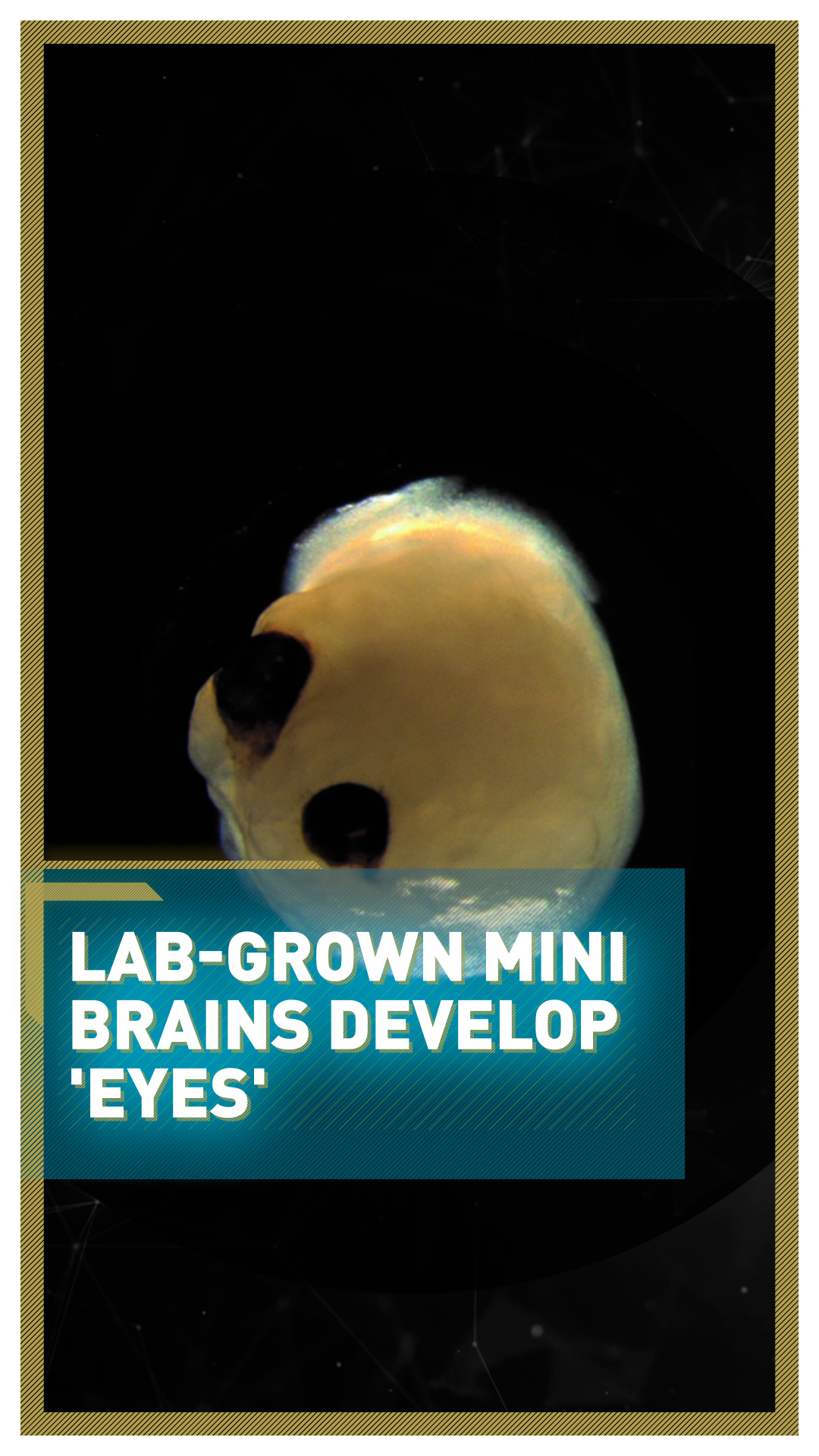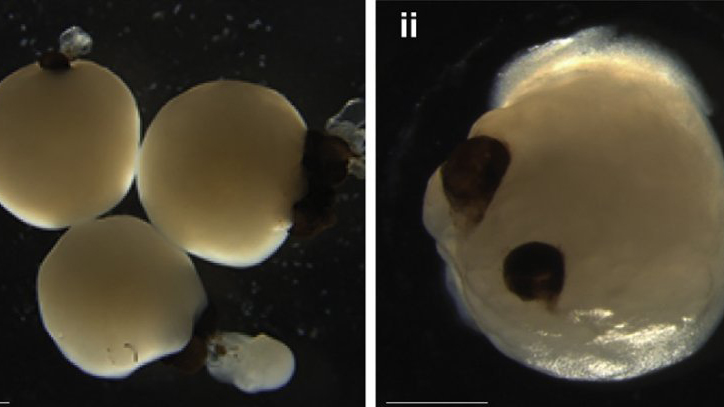01:56

Tiny blobs of the human brain grown in a dish have spontaneously developed their own set of 'eyes' in a university laboratory in Germany.
It sounds like the plot of a sci-fi movie - but for the scientific community, this is serious, groundbreaking news. And it could be good news for the rest of us too.
This research will help scientists understand why certain people develop eye diseases and others don't - including congenital blindness.
The lab-grown mini-brains are not quite the same as human brains.
Scientists at the University Hospital Düsseldorf were working on brain organoids - 3D structures grown from pluripotent stem cells. A type of stem cell that, after being taken from the human body usually in the form of blood or skin sample, is then reverse-engineered to an embryonic state in which it has the potential to develop in any cell of the body.
These mini-brains, unlike the human brain, have no consciousness, thoughts or emotions. But, most importantly, these brain organoids present the same neural pathways of the human brain.
"They do exhibit certain characteristics of the human brain tissue, but you would never be able to relate it to a normal human brain," explains neuroscientist Jay Gopalakrishnan, one of the researchers involved in the study.

Brain organoids with optic cups. /Gabriel Elke
Brain organoids with optic cups. /Gabriel Elke
In previous research, scientists had been able to grow mini brains and optic cups from stem cells separately, but never together, as integrated parts.
It is when the bulb of the optic vesicles, protruding parts from the frontal area of the brain, acquire a certain thickness and begin to sink backward that the optic cup is created.
Out of the 314 mini-brains grown in the Dusseldorf laboratory, 72 developed optic cups after the scientists encouraged their development with retinoic acid.
The optic cups grew to be visible in about 50 days - the same timeframe of eye growth observed in human embryos.
Although the 'eyes' are not able to see as our eyes do, scientists say they react to light.
"These are the primitive eye-like structures, so you know, the human eye has vasculature. We don't have vasculature in these optic vesicles. And we don't have a lid," explains Gopalakrishnan.
"However, these structures replicate several cell types that are present in the human eye during the embryonic development, and they basically develop from the forebrain structure [like the human eyes]."
As scientists cannot conduct research on actual human living brains and animal brain development has different timings and follow different mechanisms, these mini-brains represent an unprecedented opportunity to understand how our own brain develops - and why some of us are born with certain diseases.
"The first [advantage] is to underpin what are the mechanisms that cause congenital blindness," says Gopalakrishnan.
"And then, the second advantage, in the future, [is that] people will be able to generate personalized cell types for cell replacement therapy," he adds. "So in theory, one could generate personalized organoids from individual people."
Video editor: James Sandifer

